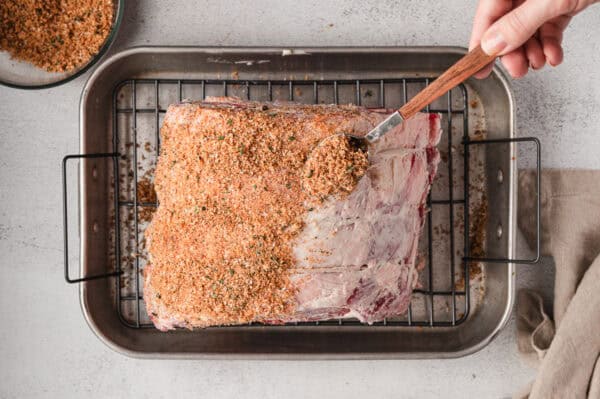Your showstopping prime rib deserves the BEST Prime Rib Rub, and I’m sorry to say store-bought options just don’t cut it! My easy prime rib rub recipe adds a flavorful punch without overpowering the meat’s natural flavor. I use simple seasonings, fresh herbs, and brown sugar (yes, sugar!) to create a rub that adds depth, tenderizes the meat, and creates a beautiful crust. I always make extra to sprinkle over veggies, pork, or chicken, too!
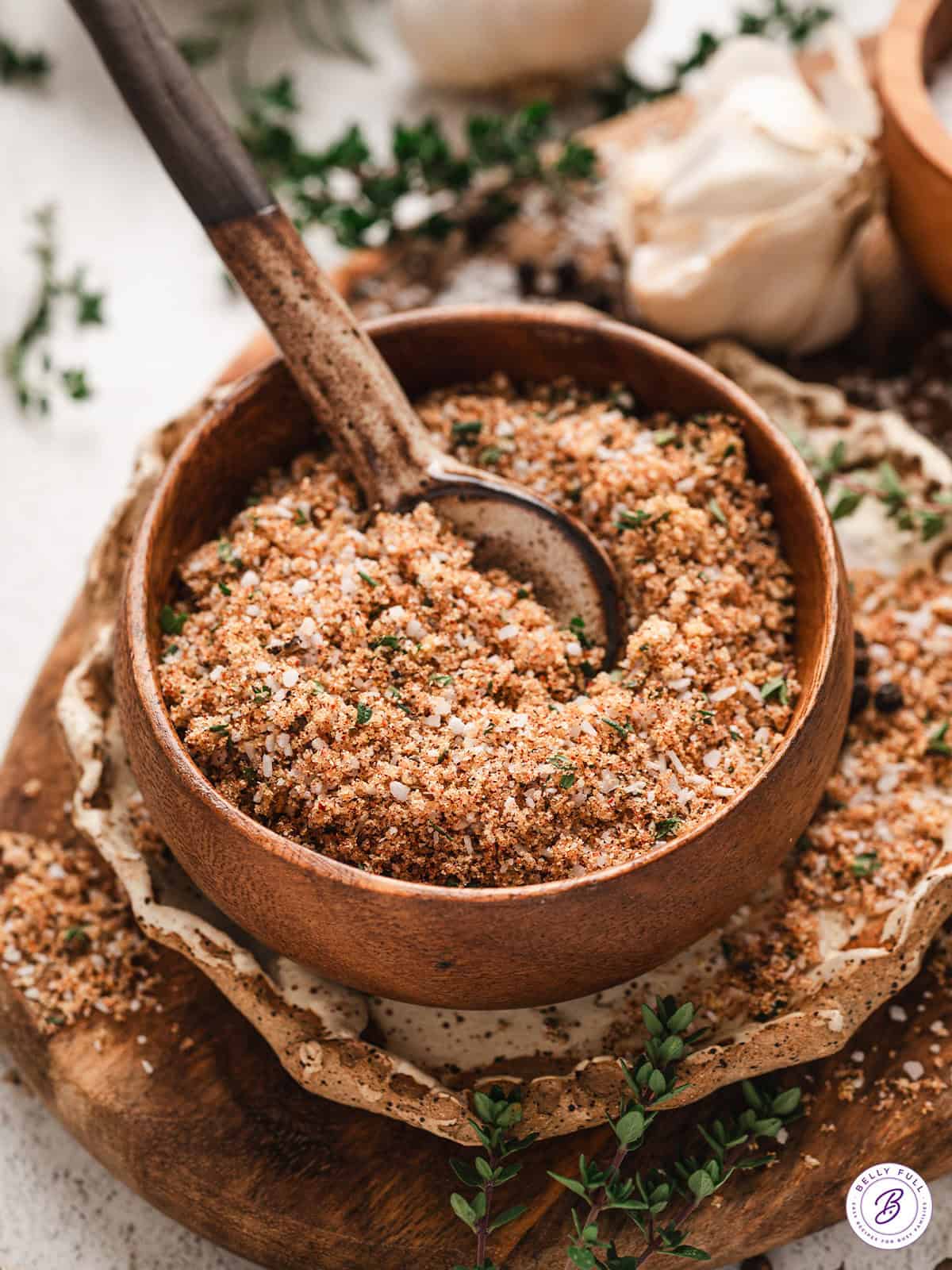
You could use the best prime rib recipe with all the right techniques, but if your seasonings are lacking, so could your final dish. And I don’t want that for you! Your roast should be nothing short of perfection, and my homemade prime rib rub is an easy way to make that happen.
Everything I use in this recipe has a purpose, from the salt and pepper to the brown sugar, garlic powder, onion powder, and smoked paprika. The fresh rosemary and thyme also lend a herby, earthy flavor that helps steer this seasoning mix away from being a sweeter BBQ-style rib rub. This makes the rub especially perfect for your Christmas prime rib roast this year!
What’s in this Prime Rib Rub Recipe?
Here’s what you’ll need to make this prime rib roast rub. Scroll down to the recipe card below for the exact measurements.
- Brown Sugar: Yes, salt is a must for a solid dry rub, but sugar adds depth and helps to tenderize the meat, too. It also helps with the Maillard reaction (when the sugar and proteins in the meat react to create a delicious, browned crust). I use dark brown sugar when making this recipe for prime rib rub.
- Fresh Rosemary & Thyme: I remove the leaves from the stems and mince them to get as much flavor out of these herbs as possible. They also smell amazing while roasting in the oven!
- Seasonings: A simple mix of sea salt, black pepper, garlic powder, onion powder, and smoked paprika is all you need to round out the flavors in this seasoning mix.
Smear Butter Before The Rub!
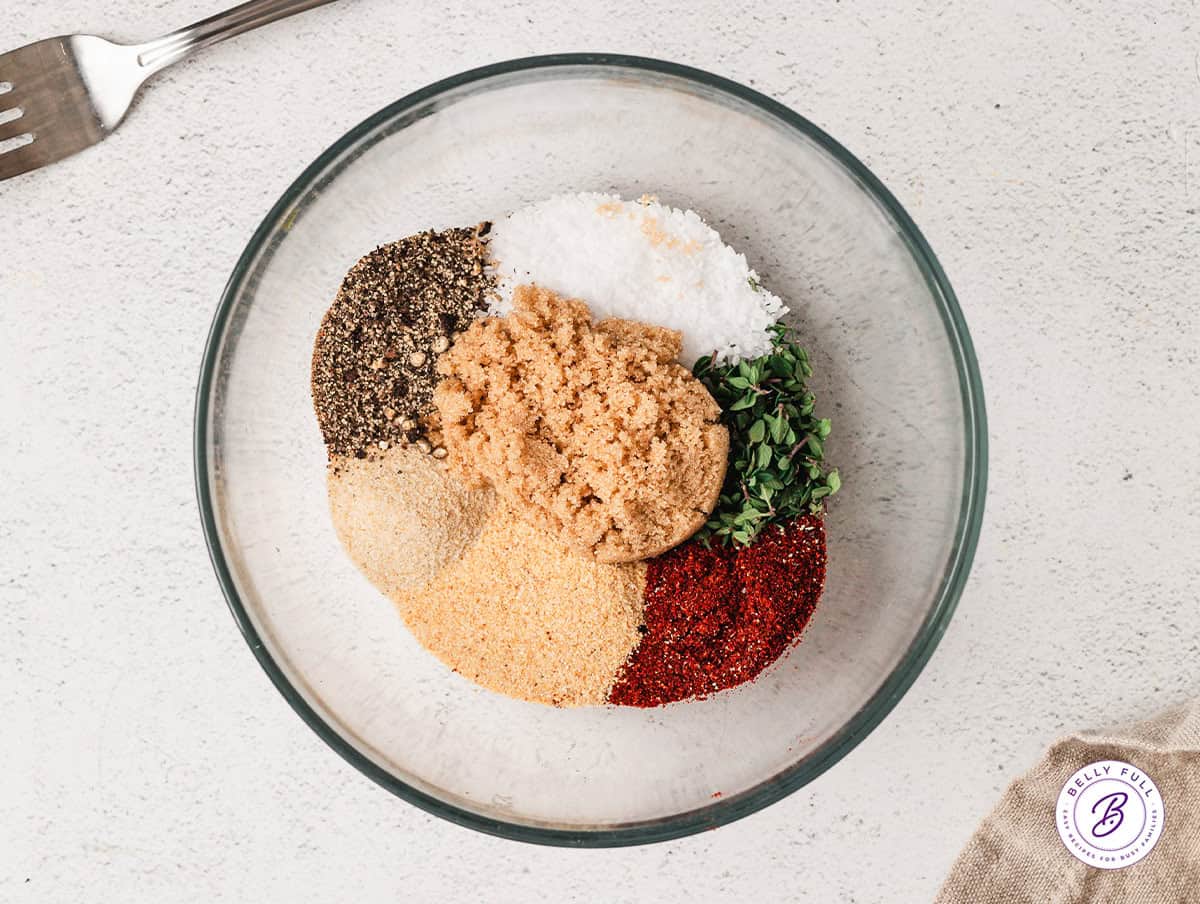
Variations to Try
I highly recommend using fresh herbs for this recipe, but dried herbs will work in a pinch. However, dried herbs are much more potent than fresh, so you’ll need to reduce the total amount required if using dried herbs. As a general rule of thumb, I recommend using 1 teaspoon of dried herbs for every tablespoon of fresh.
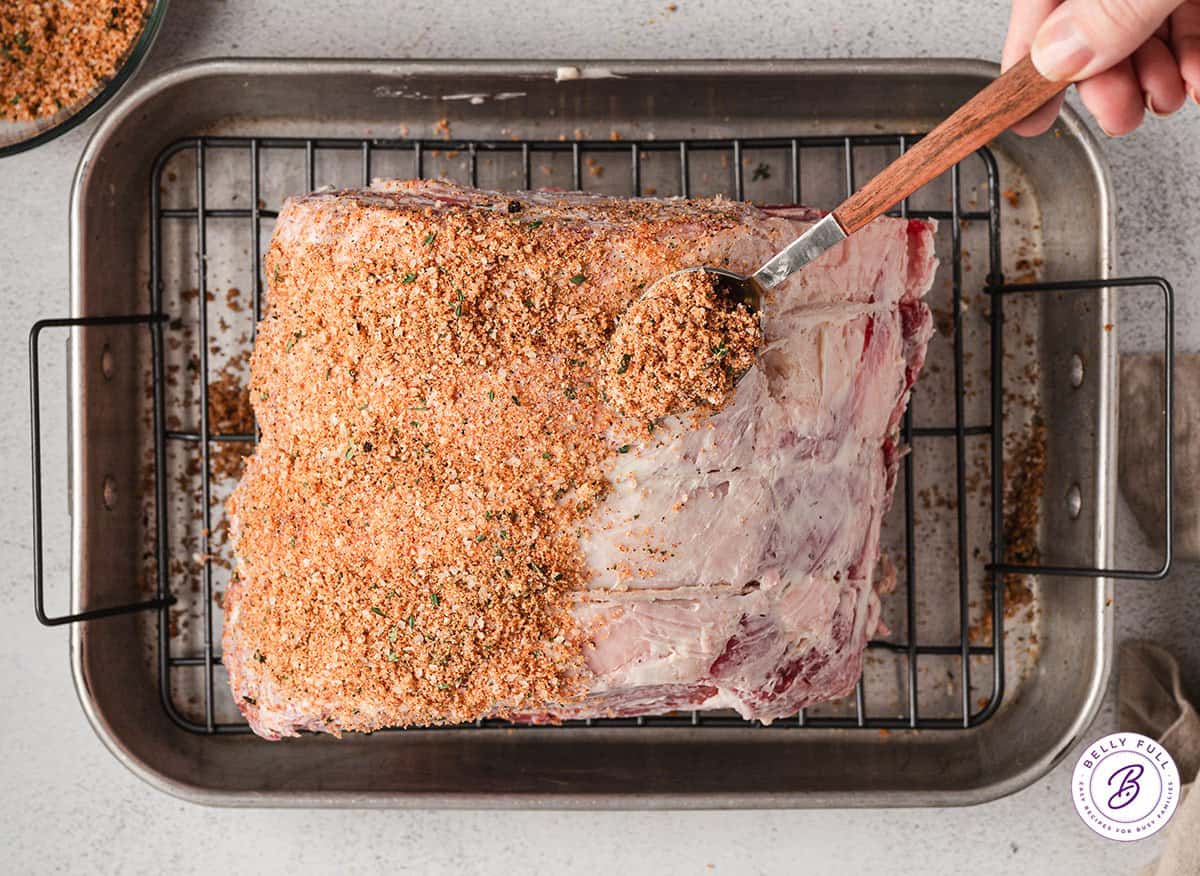
Tips for Success
- Don’t skip the salt. If you’re experienced in making meat rubs, you already know salt is essential. It’s a seasoning powerhouse and is especially important when cooking a large cut like prime rib. This is one reason why I recommend letting your meat rest for at least an hour after adding the rub. The salt in the rub will draw moisture to the surface, and when left to marinate, that salty moisture is reabsorbed back into the meat, making it more tender and flavorful.
- Pat the prime rib dry. I use paper towels to dry the meat before adding the softened butter and my homemade prime rib rub. This helps them stick to the meat better, but a dry surface is also crucial for the Maillard reaction to occur. The Maillard reaction is what gives meat (and other foods) that beautiful deep-brown crust and complex flavor.
- Massage the rub into the meat. I highly recommend using your hands to really work the rub into the meat. This evenly distributes the flavors and ensures that every bite is perfectly seasoned.
- Cook your roast fat side up. Do this to get the most out of your rub for prime rib! Cooking with the fat side up helps mimic the barding effect (where fat is placed on top of meat before cooking to keep it moist and add flavor). As the natural fat cap on your prime rib renders, it’ll self-baste the meat and help the seasonings to penetrate even further.
What Else Can I Use This Prime Rib Rub On?
While I made this rub specifically for prime rib, it’s also a great steak marinade for other cuts of beef like rib-eye or grilled flank steak. You can even use it on roasted pork tenderloin, baked chicken breast, or roasted chicken. I personally love it on roasted veggies, like these oven-roasted carrots, as the sugar helps them caramelize to perfection!
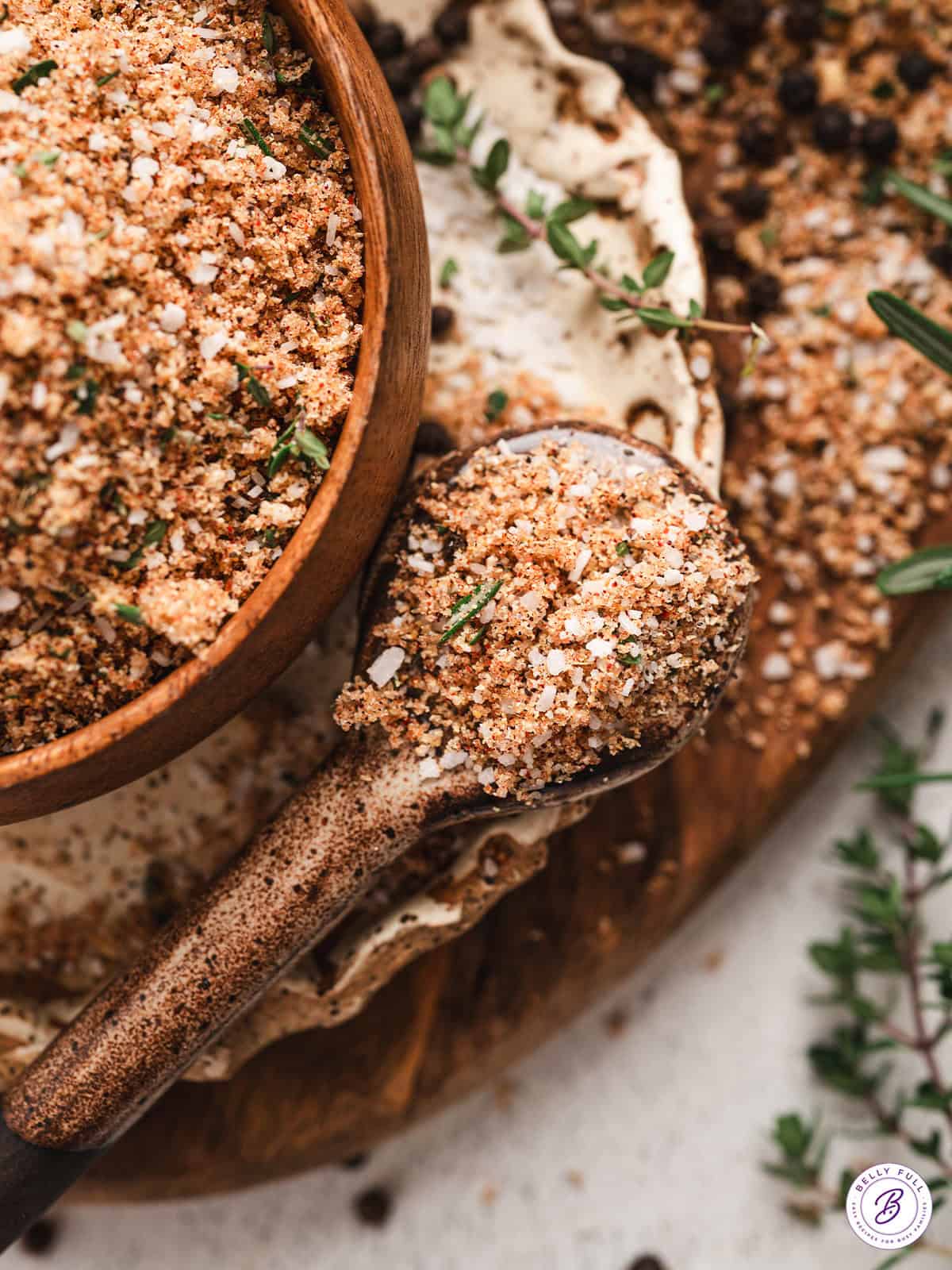
Proper Storage
This prime rib spice rub is shelf-stable for about 3-4 days before the fresh herbs start to lose their potency and freshness. You could always mix the salt, pepper, brown sugar, and spices in a jar and add the fresh herbs just before cooking (or use dry herbs, if necessary) – the dry mix will last for up to 6 months when prepared this way. I store mine in an air-tight container and keep it in a cool, dry place until I’m ready to use it.
I hope you love this delicious and easy recipe – be sure to give it a review below! Also don’t forget to follow Belly Full on TikTok, Facebook, Instagram, Pinterest, and YouTube!

Prime Rib Rub
Ingredients
- 2 tablespoons sea salt
- 2 teaspoons black pepper
- 2 tablespoons fresh rosemary , removed from stems and minced
- 1 tablespoon fresh thyme , removed from stems and minced
- 1 tablespoon garlic powder
- 1 teaspoon onion powder
- 1/2 tablespoon smoked paprika
- 3 tablespoons dark brown sugar
Instructions
- Add 2 tablespoons sea salt, 2 teaspoons black pepper, 2 tablespoons minced fresh rosemary, 1 tablespoon minced fresh thyme, 1 tablespoon garlic powder, 1 teaspoon onion powder, 1/2 tablespoon smoked paprika, and 3 tablespoons dark brown sugar to a mixing bowl.
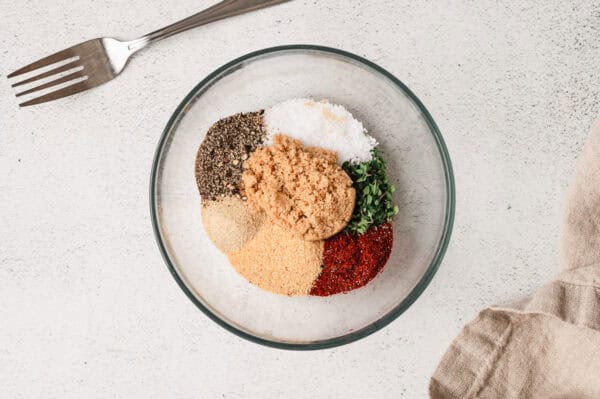
- Whisk the seasonings to combine.
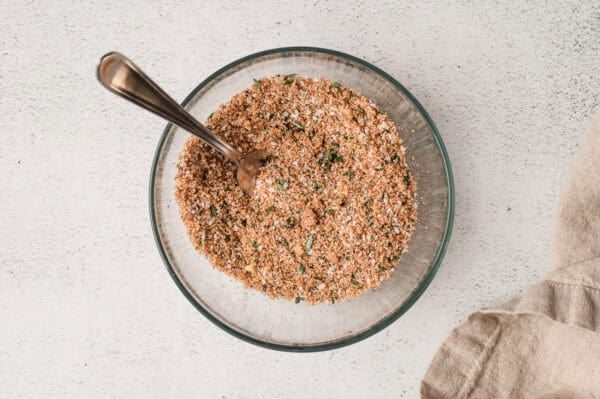
- Pat your prime rib roast dry with clean paper towels. (Then, smear 3 tablespoons of softened salted butter all over the roast!)
- Using a spoon, sprinkle the prime rib seasoning on the meat, one side at a time, and rub it with your hands. (I like to evenly pile a little extra on top at the end!). Let it marinate, then proceed with your chosen recipe and cook as directed.
